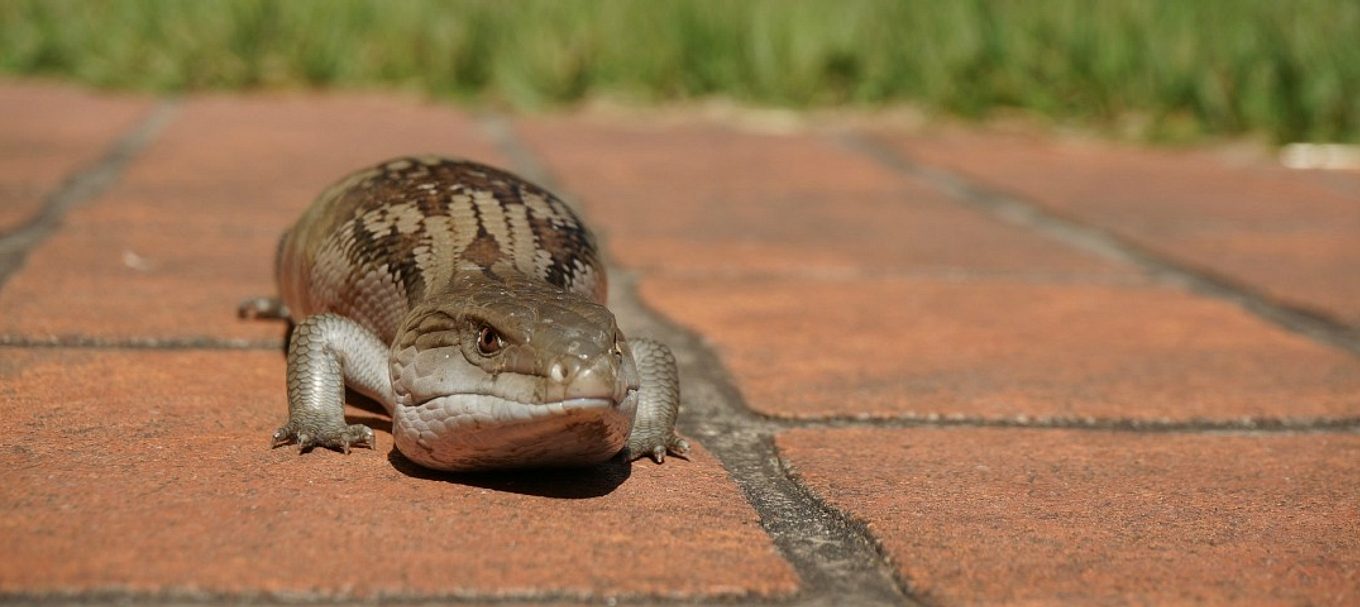
What to do if there’s a blue-tongue lizard in your backyard
Spring is when you might spot one of Australia’s most iconic reptiles – the blue-tongue lizard. This is when they start to come out of brumation – the lizard equivalent of hibernation – to warm up their cold-blooded bodies, so it’s not uncommon to spot one sunning itself on your pavers at this time of year.
You might be tempted to remove these scaly reptiles from your backyard, but that should be your last resort. It’s important to understand they are harmless to you and your pets, and provide a valuable pest control service to your home, snacking on snails, caterpillars, insects, and other garden pests.
You can be living in harmony with your new-found lizard friends in no time. Here’s everything you need to know, including some fun facts thrown in for good measure:
- Blue-tongues are not venomous but if they feel threatened they can try to look intimidating by opening their mouth and hissing to warn off predators. It’s best not to pick them up as they can bite, but it would rarely cause serious damage.
- Blue-tongues have a home range. This means that if the lizard lives in your backyard, the front yard will be totally foreign to it, so it won’t know where to find food, shelter, and water, and will be more prone to predators. For this reason, it’s best to avoid moving them.
- If the lizard has just moved into your yard it will usually run away from you, but after a while when it learns you are not a threat, it will allow itself to be more visible.
- Lizards are cold-blooded so they have to warm themselves up in the mornings to become active and to digest their food, which is why you will often see them basking in the morning sun.
- Like most intelligent animals, they avoid the heat of the day and, in hot weather, may become active in the evenings when it’s cooler.
- It’s illegal to catch blue-tongues and sell them or keep them as pets. If you want a pet lizard, head to your local pet shop.
- Baby blue-tongues don’t need rescuing. They are born independent.
- Like the French, blue-tongues see snails as a delicacy. So don’t use snail pellets around your yard. If a poisoned snail is eaten by a blue-tongue, the lizard could die.
- Be careful when you use lawn mowers and whipper snippers. Lots of lizards are killed or injured by them.
What do I do if my family pet is outside?
Your dog or cat is capable of doing more harm to a blue-tongue than vice versa.
To keep lizards safe in your yard, provide them with hiding spots. For example, try putting pieces of PVC pipe into rockeries or garden beds for them to crawl into.
If your dog or cat is showing signs of harming the lizard, it may be best to move the lizard to the closest spot in your backyard, away from your pets, that has suitable similar habitat.
Remember, moving them altogether really is a last resort as they will often cross roads to get back to their home range and might be hit by a car.
As well as that, lizards see bitumen roads as a good heat source and basking spot, but this really puts them in danger of traffic.
It is illegal and cruel to deliberately run over a blue-tongue, so if you see one on the road, take care when driving past. They really are neat little critters that add colour to our lives.
Interested in learning more? We've answered your most frequently asked questions about how to keep blue-tongue lizards safe if one decides to make itself at home in your backyard.





